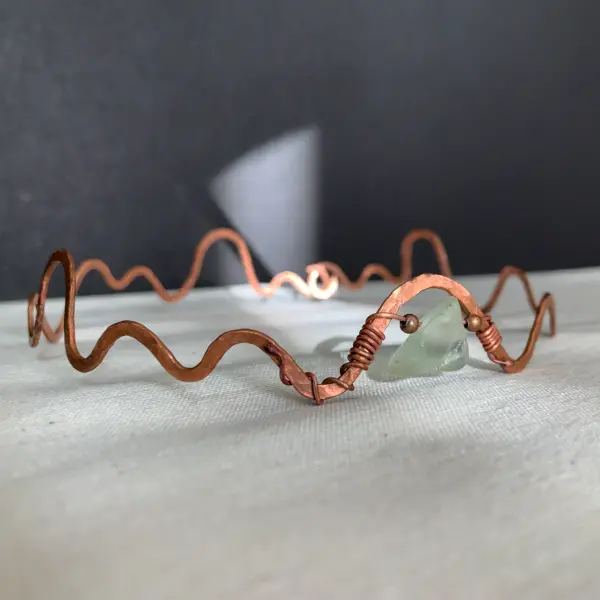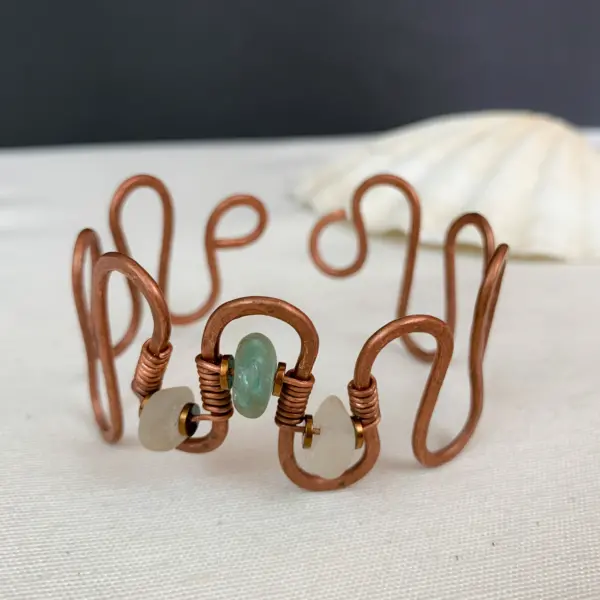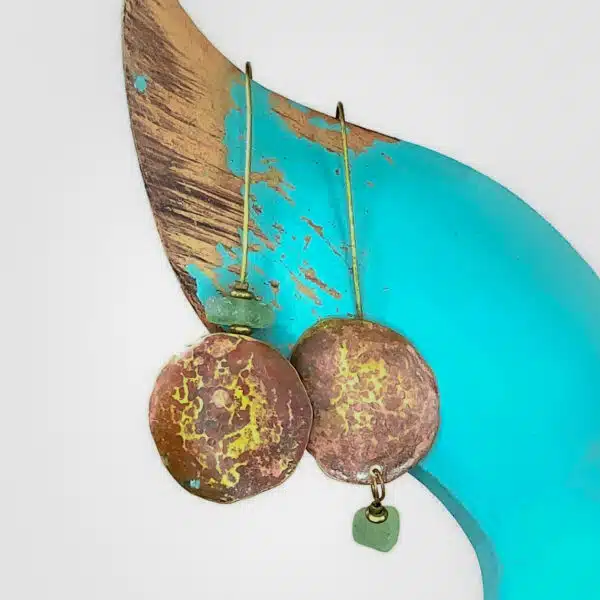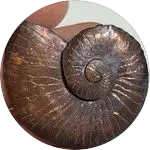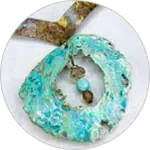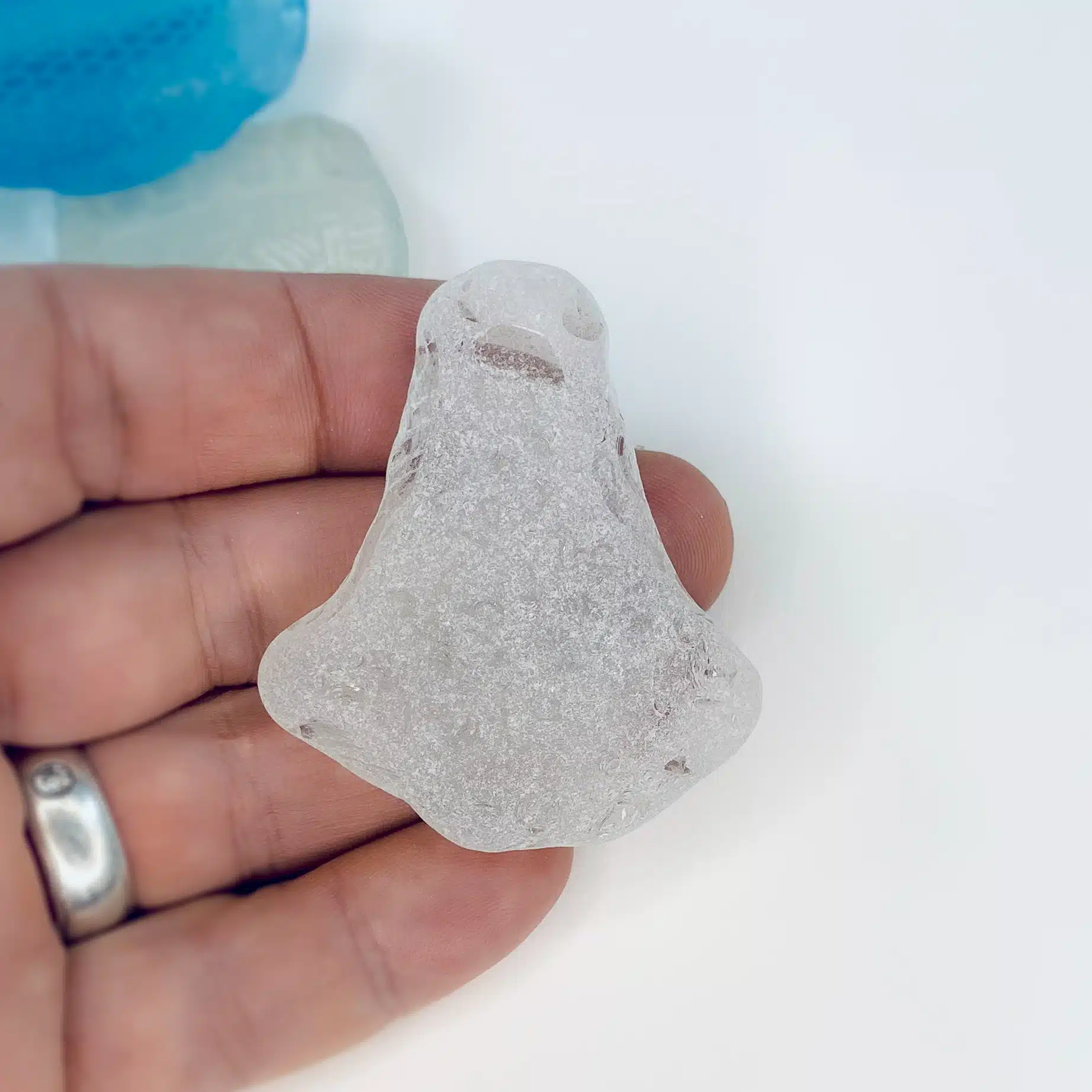
The value and beauty of genuine sea glass comes from its origin and story. The history of the original glass piece, and the long time it spent in the sea among the waves, how it travels through the seas and oceans, until it breaks to pieces and glass pieces reach a coastline, where they still spend years among the pebbles, until the pieces become smooth and frosted by the constant tumble of nature’s elements. This kind of tumbling creates a unique surface on the glass, as well as unique forms in every imaginable shapes. The smoothness and the look of the frost on the surface also can differ from beach to beach because it depends on different factors, like the salt content of the sea, the type and coarseness of the pebbles or sand, the pH balance of the water, and the strength of waves that tumble the glass among the pebbles. The result of all these factors is that each piece of genuine sea glass is one of a kind. Even if a thousand pieces have been collected, each of them will look different!
Here in Malta, where we collect all our sea glass pieces that we use in our jewellery making, the coastline sees a lot of heavy storms in the winter months. During these storms the wave heights can reach even 4-6m, crushing on the shores, throwing up and down thousands of stones in every possible size. These waves are not gentle to the sea glass pieces which are hiding among the pebbles – the waves quite often break off pieces of the already smooth and frosted glasses.


Based on these we can say with certainty that genuine sea glass is rarely perfect in its shape and surface. They are rarely perfectly round, and almost never perfectly smooth. If we have a closer look at the surface, we can see tiny marks and cuts, and when the pieces are dried out, the whole surface becomes matte and dull, making those marks more visible. Most of the cases we use them as they are, without any alteration on the shape and surface. In some cases, however we apply a tiny bit of baby oil or coconut oil on the surface to give it a shine which imitates the luster it had when it was found wet on the beach.
One more sign of authenticity is the colour. Genuine sea glass have their own colour rarity scale, depending on the origin of the glass. You can read more about it in our ‘Colours, origins and rarity of sea glass’ article here, where you can find that there are some colours which are extremely rare to find, for example cobalt blue, yellow, red or black. The colour rarity depends on the location as well, where they are collected. In some parts of the world there are more pieces to be found in these rare colours, while on other parts of the planet they are considered ultra rare. In Malta, for example, cobalt blue is extremely rare, there are hardly any decent size pieces at all. Black sea glass can be found occasionally (they need a trained eye though), although it is also considered very rare, especially since the manufacture of this type of glass has long been stopped (decades ago), so these pieces are really old. And there are almost no red ones. During the years we found only 1 red piece…


On the other hand, you can find “sea glass” in many webshops on the internet, which look perfectly smooth, round and shiny, and in rare colours. In most of the cases those pieces are artificial sea glass, meaning they are hand-tumbled, or mass produced by machinery or acid etching from broken glass. Sadly, they are still labeled as ‘sea glass’, however some honest sellers mention ‘hand-tumbled’ or ‘artificial’ in their description, but other sellers don’t. Some people use old bottles to make artificial sea glass, this way recycling and reusing glass. It worth to mention that there is nothing wrong with artificial sea glass as long as they are labeled accurately, so that the buyer can know what he or she is buying.
So here is a little help for you, some features of artificial sea glass to look for so that you can determine if the sea glass you are looking at is genuine or not:
– too smooth surface without any imperfectness or marks, uniform texture
– lustered or shiny surface
– rare colours in large quantities (like red, cobalt blue, aqua blue, turquoise)
– perfectly round shape
– geometrical shapes
– identical pieces
– relatively low price
– sharp or angular edges that also seem to be frosted
Knowing these you can more easily verify yourself if the sea glass you find in a webshop is genuine or artificial.

We guarantee that all of our sea glass we use in our jewellery creations are genuine, unaltered (except drilling holes when needed), and hand-picked by ourselves on the shores of this tiny gem in the middle of the Mediterranean Sea – Malta.
FOLLOW US ON
Art of Nature | Contemporary Jewellery
@artofnaturejewellery





